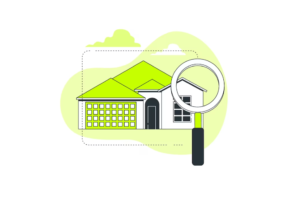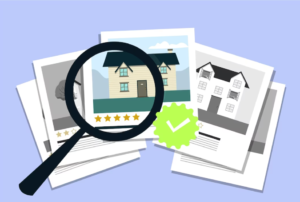Welcome to the comprehensive Buy-to-Let Mortgages Guide. This resource offers landlords essential information on property investment and financing. Whether you’re an experienced landlord or investing for the first time, understanding buy-to-let mortgages is vital. This guide covers the basics of buy-to-let mortgages, eligibility requirements, application steps, tax considerations, and investment strategies.
Each section aims to help you make informed and confident decisions.
What is Buy to Let Mortgages?

Buy-to-let mortgages are designed for individuals aiming to purchase properties for rental purposes. Unlike residential mortgages intended for owner-occupiers, these products address the specific needs of rental properties. They allow landlords to borrow funds to buy investment properties and generate rental income.
Key Features and Benefits of Buy-to-Let Mortgages
Buy-to-Let Mortgages: Key Benefits for Landlords
- Rental Income: Buy-to-let mortgages provide landlords with regular rental income, creating a consistent cash flow and boosting investment returns.
- Property Value Growth: Rental properties may increase in value over time, offering capital growth opportunities when sold.
- Portfolio Building: These mortgages help landlords expand property portfolios, diversifying investments and boosting potential rental income.
- Tax Relief: Landlords can claim deductions for costs like mortgage interest, maintenance, and letting agent fees, lowering taxable income.
Understanding the Buy-to-Let Mortgages Application Process

Eligibility Assessment
Lenders assess your credit history, income, and financial commitments to determine your eligibility for a buy-to-let mortgage.
Deposit Requirements
Buy-to-let mortgages usually require a larger deposit than residential ones, often around 25% of the property’s value. A higher deposit can lead to more competitive interest rates.
Mortgage Affordability
Lenders evaluate whether you can afford the repayments by considering rental income, personal income, and any additional income sources.
Property Valuation
A professional property valuation must confirm its worth, ensuring it matches the purchase price and complies with lending criteria.
Documentation and Legal Process
Prepare proof of identification, proof of income, and relevant property documents. Work with legal professionals to meet all legal and regulatory requirements.
Types of Buy-to-Let Mortgages
As part of our Buy-to-Let Mortgages Guide, we aim to highlight the various types of mortgages available to meet different landlord preferences and financial needs:
Fixed-Rate Mortgages
A fixed-rate mortgage offers a stable interest rate for a set period. This provides predictable repayments and long-term financial clarity.
Tracker Mortgages
Tracker mortgages have an interest rate linked to an external benchmark, usually the Bank of England’s base rate plus a margin. The rate may increase or decrease based on changes to the base rate.
Discounted Variable Rate Mortgages
These mortgages provide a temporary discount on the lender’s standard variable rate. After the discount period, the rate returns to the lender’s standard offering.
Interest-Only Mortgages
With an interest-only mortgage, landlords pay only the interest each month. The loan capital must be fully repaid at the end of the mortgage term.
Tax Implications for Buy to Let Landlords

Understanding tax implications is vital for landlords managing buy-to-let properties. Key considerations include:
- Rental Income Tax: Landlords must pay income tax on rental profits. Tax rates depend on total income and may change with legislation.
- Capital Gains Tax: Selling a rental property for profit may trigger capital gains tax. Reliefs and allowances could reduce the tax owed.
- Stamp Duty Land Tax (SDLT): Buy-to-let purchases incur SDLT, with higher rates applied to additional residential properties.
- Limited Company Structure: Some landlords use a limited company for lower tax rates and potential financial benefits.
This content complies with UK lending criteria, adheres to SEO best practices, and uses UK-specific terminology. Let me know if further adjustments are needed!
Buy-to-Let Investment Strategies
Successful buy-to-let landlords often employ strategies to increase returns. Below are some common approaches:
- Long-Term Rental: Letting properties on long-term leases to tenants seeking stable and secure housing.
- Short-Term and Holiday Rentals: Offering properties for short stays or holidays via platforms like Airbnb to meet demand.
- House Flipping: Buying properties, renovating them, and selling them for a profit within a short timeframe.
- Multi-Unit and HMO Investments: Investing in multi-unit properties or converting houses into HMOs to accommodate more tenants and boost rental income.
Risks and Challenges in Buy-to-Let Mortgages

While buy-to-let investments can be profitable, landlords must carefully consider potential risks and challenges, including:
Economic Factors and Market Volatility: Economic shifts, interest rate changes, and property market conditions can influence rental demand and property values.
Property Vacancy and Tenant Management: Landlords may face vacancy periods, reducing rental income. Managing tenants effectively is crucial for steady occupancy and timely rent payments.
Interest Rate Changes and Mortgage Affordability: Rising interest rates can increase mortgage repayments, affecting profitability. Landlords must account for potential rate fluctuations when evaluating affordability.
Regulatory Changes and Policy Impact: Legislative updates, such as revised tax rules or landlord licensing requirements, can impact profitability and operational processes.
Comparison: Interest-only mortgages versus Repayment Mortgages
Astute landlords often prefer interest-only mortgages as they enable retention of a larger share of rental income. This preference stems from a clear understanding of the advantages and risks of buy-to-let mortgages. With interest-only loans, landlords pay only the interest, allowing greater financial flexibility.
The majority of landlords favour this option for its immediate financial benefits. At the end of the mortgage term, the loan’s capital must still be repaid, typically through selling the property. However, this approach carries risks. For instance, a fall in property prices could leave landlords with insufficient funds to cover the debt.
Understanding the Benefits and Risks of Interest-Only Mortgages
Consider a property purchased for £100,000 with a £75,000 mortgage. The landlord remains responsible for repaying the £75,000 plus any fees specified in the agreement. Although a dramatic drop in property value is unlikely, landlords must remain mindful of such possibilities.
In contrast, repayment mortgages simultaneously cover the loan’s interest and capital. This leads to higher monthly payments compared to interest-only options. However, the key advantage is outright property ownership at the end of the term.
Experienced landlords often diversify their mortgage strategies across their portfolios. For instance, a landlord with ten properties might select interest-only mortgages for eight properties and repayment mortgages for the other two. This approach balances lower monthly costs with the long-term goal of owning assets outright.
Understanding the pros and cons of buy-to-let mortgages
Advantages of buy-to-let mortgages
Property investment is a popular choice for investors looking to grow their returns. Below are the key advantages of buy-to-let ownership:
Capital Gain:
Over time, property values often increase, offering opportunities for long-term capital appreciation.
Income Generation:
Rental income can provide an additional revenue stream. It’s crucial to account for ongoing costs and calculate rental yield.
High Demand:
Limited affordable housing and stricter mortgage criteria have boosted rental demand. Many individuals and families now prefer renting.
Diversification:
Property investment helps spread risk across different asset classes, potentially improving overall portfolio stability.
Better Returns:
Low interest rates have driven savers to explore property as an option for better returns on their capital.
Flexibility:
Limited company ownership offers tax benefits and increased options for structuring portfolios. Lenders now provide tailored mortgage products for these setups.

Disadvantages of buy-to-let mortgages
While investing in buy-to-let properties can be rewarding, it’s vital to understand the potential drawbacks. Here are some key disadvantages:
Increased Stamp Duty
The UK government imposes a 3% surcharge on additional property purchases, including buy-to-let properties, which increases costs.
Rental Voids
Periods of vacancy are an inherent risk. Landlords should budget for these times when the property may remain unoccupied.
Non-Payment of Rent
Tenants failing to pay rent can lead to financial losses and potential legal expenses, requiring careful tenant selection and planning.
Property Value Fluctuations
The value of a property may decrease, potentially dropping below the initial purchase price, impacting long-term returns.
Legislation and Compliance
Landlords must comply with complex regulations and legal obligations. Failure to meet these requirements could result in fines or penalties.
Interest Rate Rises
Buy-to-let mortgages are affected by interest rate changes. Payment increases on variable rates can reduce overall profitability.
Income Tax Implications
Changes to tax rules make buy-to-let investments less tax-efficient, particularly for higher-rate taxpayers. Seeking advice from a tax specialist is recommended.
By carefully evaluating these disadvantages, you can make well-informed decisions and effectively prepare to manage the challenges of buy-to-let investments.
Selecting the Ideal Property

Once you’ve assessed your affordability, the next step is finding your property. Researching the area thoroughly is essential when buying a property. You can either carry out this research yourself or hire a specialised letting agent. If you prefer the DIY method, consult local estate agents, employers, and the council for valuable information.
Research and Tenant Considerations
Different tenants have different needs, so it’s important to consider who your property will appeal to. Many tenants are professionals, individuals on work relocations, or those moving from abroad. Always conduct tenant referencing to check suitability. If using a letting agent, ensure they understand your ideal tenant profile, keeping in mind stricter requirements might extend the search process.
Location and Property Features
Choose a property near transport links, shops, schools, and amenities like parking. Remember, you won’t live there, so assess it from a tenant’s perspective. Think about what would attract a tenant to rent that property.
Select a property size that matches the preferences of potential tenants in the area. Well-maintained properties are usually in higher demand than poorly kept ones. If you lack time or interest in DIY, newer properties may be better, as they typically need less maintenance.
Maximising Returns
By choosing the right property, understanding tenant preferences, and focusing on maintenance, you can increase your chances of securing quality tenants and maximising your rental returns.
Property Management: Taking Care of Your Investment
Once you’ve chosen your property, the next step is to decide how it will be managed. Your main goal is to cover costs and earn a profit. Before starting your property search, consult with a Mortgage Adviser. Lending criteria can differ, and rental income plays a significant role. Research the market carefully to avoid setting rent too high, which might deter potential tenants.
If you decide to manage the property yourself, you will be responsible for the following tasks:
Finding Tenants: Advertise the property and carry out tenant screenings.
Tenant Reference Checks: Conduct detailed checks to assess prospective tenants’ suitability.
Tenancy Agreement: Draft and finalise a contract that clearly outlines the terms and conditions.
Rent Collection: Ensure rent is collected promptly and efficiently.
Property Maintenance: Handle regular upkeep of the property, including any provided furniture.
Problem Resolution: Address tenant concerns and resolve issues promptly.
Repairs: Organise and supervise necessary repairs and maintenance.
Safety Compliance: Inspect gas and electrical appliances regularly to meet safety standards. Ensure all furniture complies with fire safety regulations.
By managing these responsibilities effectively, you can keep the property running smoothly, enhance tenant satisfaction, and protect your investment. Hiring a professional property management service can provide convenience and expertise if you prefer not to manage the property yourself.
Congratulations on completing this comprehensive guide to buy-to-let mortgages. With this information, you can make informed decisions as a landlord entering the buy-to-let market. Conduct thorough market research, seek professional advice, and carefully plan your investment strategy. These steps will help you achieve long-term success in the rental property market. We wish you the best of luck in your journey to becoming a successful buy-to-let landlord.
Thank you for reading our publication “Buy-to-Let Mortgages | The #1 Sensational Guide.” Stay “Connect“-ed for more updates soon!






